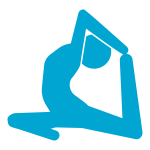Virtually all psychiatric drugs are essentially toxins – they are not nutrients or substances that naturally occur in the body, but chemicals that disrupt and alter natural body functions, and that the body must constantly be processing and eliminating to prevent the buildup of dangerous levels of toxicity. (The one modern exception is lithium, which is a natural salt – though the level that lithium is typically prescribed at for psychiatric purposes is so dangerous that it necessitates near-constant monitoring.) Therefore, tapering off psychiatric drugs is, fundamentally, a process of detoxification and healing: Synthetic chemicals that have been continuously present in the brain and body—in the case of many of us, for extended periods of time—are being slowly removed. Along the way, various parts of the body such as the liver, kidneys, skin, colon, and lymphatic system are working to help remove those toxins and initiate a process of physical and neurological healing and recovery.
It’s common knowledge that moving the body through exercise helps stimulate heart rate, get lymph moving, circulate blood, improve liver function, and aid in digestion – all of which are instrumental to effective, natural detoxification processes. So not surprisingly, many people in the lay withdrawal community have reported experiencing enormous benefits from maintaining or increasing their levels of physical activity during withdrawal. And there are various different categories of movement that are known to get this detox process going especially well, each of which involves different approaches to using breath, muscle, and energetic exertion. One of the more common ways to divide these categories of exercise is as follows:
- Strength: Strength-based exercises (sometimes called ‘anaerobic exercises’) involve short bursts of activity aimed primarily at building muscle strength, speed and power. Examples include sprinting, resistance training, and weight-lifting.
- Endurance: Endurance exercises (also called ‘aerobic exercises’ or ‘cardiovascular training’) increase heart rate, lung function, and blood flow in a sustained capacity over longer periods of time. Examples include jogging, biking, swimming, dancing, or even “ordinary” activities such as yard work.
- Flexibility and balance: Flexibility and balance exercises primarily aim to increase the elasticity, tone and flexibility of muscles and tendons, stimulate internal organs and glands, and strengthen alignment of the body through building strength in its middle ‘core’ area. Examples include hatha yoga, Pilates, tai chi and stretching.

It’s generally believed that a good balance of these various types of activities is optimal for overall well-being. But considering the vastly different ways that people’s bodies respond to psychiatric drug withdrawal, finding a personalized relationship to whichever of these different types of exercise feel in line with your own healing journey is key. Otherwise, there is a risk that exercise might end up further perpetuating rather than dissipating stressors and traumas in your body. For example, some people who have tapered off or are tapering off psychiatric drugs—especially those who’ve done so too quickly—find that any kind of strength- or endurance-based exercise, even simply ascending one flight of stairs, can set off the body’s “fight or flight” response in such a way that they end up feeling far worse than before. (There are a variety of physiological reasons why this might happen, including the fact that the neurotransmitter systems involved in regulating stress can become injured or impaired by psychiatric drugs.) So in situations such as this, people listen to their bodies and shift their focus onto finding gentler ways to move the body – such as doing gentle yoga, tai chi, or mindful walking. Though it may not be as vigorous as going on a jog, it’s still helping the body to maximize its natural detoxification and healing processes.

On the other hand, some people find that they absolutely need vigorous and even incredibly intense exercise to help them release tension and stress in their bodies during withdrawal. In these circumstances, gentler forms of exercise may feel unhelpful or even anxiety-inducing. These people find they need, for example, an intense hour on a treadmill, bike, or rowing machine.
Many of us have found it empowering during withdrawal to experiment with these different types of movement from a place of curiosity and open-mindedness, and to pay attention to the messages of our bodies along the way. The goal is to get a good sense of how different types of exercise affect other aspects of our health and well-being, such as:
- Quality of sleep
- Appetite
- Gut, digestion, and bowel movements
- Changes in our mental or emotional states
- Sexual functioning and sexuality
- Cognitive functioning, focus, memory, and communication abilities
- Energy levels
- Overall health and immune function
- Hormonal or reproductive functions (though these and similar kinds of factors may require professional testing to determine what effects if any are occurring)
By staying gentle and patient with ourselves at each step, we’ve found our way to developing our own activity routines in line with our personal needs and circumstances—and we’ve also found that these change over time as the tapering and healing continues. Viewing this process as an opportunity to get to know your body again can help make the exploration feel more meaningful and aligned with your overall journey back to yourself.

The Importance of Movement and Exercise in Psychiatric Drug Withdrawal
Virtually all psychiatric drugs are essentially toxins – they are not nutrients or substances that naturally occur in the body, but chemicals that disrupt and alter natural body functions, and that the body must constantly be processing and eliminating to prevent the buildup of dangerous levels of toxicity. (The one modern exception is lithium, which is a natural salt – though the level that lithium is typically prescribed at for psychiatric purposes is so dangerous that it necessitates near-constant monitoring.) Therefore, tapering off psychiatric drugs is, fundamentally, a process of detoxification and healing: Synthetic chemicals that have been continuously present in the brain and body—in the case of many of us, for extended periods of time—are being slowly removed. Along the way, various parts of the body such as the liver, kidneys, skin, colon, and lymphatic system are working to help remove those toxins and initiate a process of physical and neurological healing and recovery.
It’s common knowledge that moving the body through exercise helps stimulate heart rate, get lymph moving, circulate blood, improve liver function, and aid in digestion – all of which are instrumental to effective, natural detoxification processes. So not surprisingly, many people in the lay withdrawal community have reported experiencing enormous benefits from maintaining or increasing their levels of physical activity during withdrawal. And there are various different categories of movement that are known to get this detox process going especially well, each of which involves different approaches to using breath, muscle, and energetic exertion. One of the more common ways to divide these categories of exercise is as follows:
It’s generally believed that a good balance of these various types of activities is optimal for overall well-being. But considering the vastly different ways that people’s bodies respond to psychiatric drug withdrawal, finding a personalized relationship to whichever of these different types of exercise feel in line with your own healing journey is key. Otherwise, there is a risk that exercise might end up further perpetuating rather than dissipating stressors and traumas in your body. For example, some people who have tapered off or are tapering off psychiatric drugs—especially those who’ve done so too quickly—find that any kind of strength- or endurance-based exercise, even simply ascending one flight of stairs, can set off the body’s “fight or flight” response in such a way that they end up feeling far worse than before. (There are a variety of physiological reasons why this might happen, including the fact that the neurotransmitter systems involved in regulating stress can become injured or impaired by psychiatric drugs.) So in situations such as this, people listen to their bodies and shift their focus onto finding gentler ways to move the body – such as doing gentle yoga, tai chi, or mindful walking. Though it may not be as vigorous as going on a jog, it’s still helping the body to maximize its natural detoxification and healing processes.
On the other hand, some people find that they absolutely need vigorous and even incredibly intense exercise to help them release tension and stress in their bodies during withdrawal. In these circumstances, gentler forms of exercise may feel unhelpful or even anxiety-inducing. These people find they need, for example, an intense hour on a treadmill, bike, or rowing machine.
Many of us have found it empowering during withdrawal to experiment with these different types of movement from a place of curiosity and open-mindedness, and to pay attention to the messages of our bodies along the way. The goal is to get a good sense of how different types of exercise affect other aspects of our health and well-being, such as:
By staying gentle and patient with ourselves at each step, we’ve found our way to developing our own activity routines in line with our personal needs and circumstances—and we’ve also found that these change over time as the tapering and healing continues. Viewing this process as an opportunity to get to know your body again can help make the exploration feel more meaningful and aligned with your overall journey back to yourself.